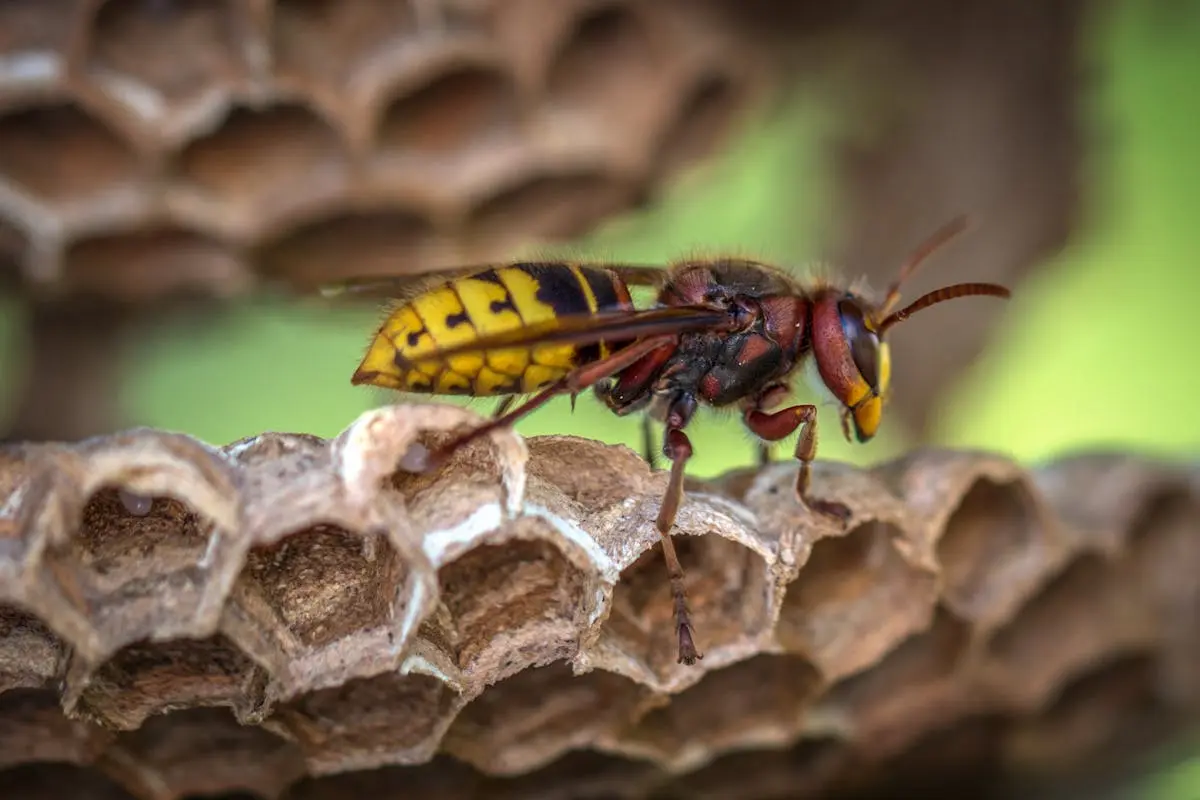Discovering a wasp nest near your home can be alarming. Before you take any action, it’s important to know the safest ways to handle the situation. This blog will guide you through 10 essential tips for safe wasp nest removal, ensuring you and your loved ones stay safe while dealing with these potentially dangerous pests.
1. Know When to Call a Professional
Asking yourself whether you need to call a professional for wasp nest removal service near me? It’s a given that large or hard-to-reach nests warrant a call to the experts. Dealing with wasps can be perilous, and professionals have the right equipment and training to safely remove the nest without endangering themselves or others. Moreover, they can identify species which might be protected or require special handling. Don’t take unnecessary risks; when in doubt, call in the professionals.
2. Equip Yourself with the Right Gear
If you decide to proceed on your own, gearing up appropriately is non-negotiable. Protective clothing is your first line of defense against wasp stings. This means wearing long sleeves, gloves, pants, and a hat or veil to protect your face and neck. Wasps are provoked by certain colors and scents, so opt for light-colored and unscented clothing. The right gear doesn’t just help in preventing stings; it provides peace of mind, allowing you to focus on the task at hand with reduced anxiety.
3. Time Your Removal Right
Did you know that wasps are less active during early morning or late evening? That’s the perfect time to approach and deal with a nest. The cooler temperatures mean wasps are slower and less likely to swarm. Planning your removal during these times reduces the chances of stings and complications. It’s these small details that can make a big difference in the safety and effectiveness of your wasp nest removal efforts.
4. Keep Children and Pets Away
One of the most important steps in ensuring a safe wasp nest removal is to keep your children and pets at a safe distance. The curiosity of children and pets can lead them dangerously close to the wasp nest, increasing the risk of them being stung. Create a safety perimeter and discuss with your family the importance of staying clear of the area until the nest is safely removed. Also, consider having another adult on hand to help keep an eye on them as an extra precaution.
5. Understand Wasp Behavior
Gaining insight into wasp behavior is a strategic advantage in safely managing their removal. Wasps can become aggressive if they feel their nest is threatened, leading to swarms that target perceived threats. However, most wasps will not go out of their way to attack if you remain calm, move slowly, and keep a respectful distance from their nests during observation. Knowing this can help you assess the situation more safely and decide on the best course of action.
6. Choose the Right Method for Removal
There are various methods to consider for wasp nest removal, from sprays to traps to natural deterrents. The best approach often depends on the nest’s location, size, and accessibility. Sprays can be effective but require close range and can pose risks if not used correctly. Alternatively, traps can attract and contain wasps without the need for close contact, making them a safer choice in certain situations. Researching and choosing the method that best fits your scenario is key to safe and effective removal.
7. Use Wasp Repellent Sprays Wisely
While repellent sprays are a popular choice for dealing with wasp nests, they must be used with caution. It’s essential to read and follow the instructions carefully to avoid inhaling toxic fumes or causing harm to unintended targets, including beneficial insects, pets, and people. Additionally, it’s advisable to apply sprays during times when wasps are least active to maximize effectiveness and reduce risk. Safety gear, as mentioned earlier, is also crucial when using these products.
8. Seal Off Entry Points
After removal, preventing future wasp incursions is your next step. Wasps can enter through the smallest of gaps, making it crucial to inspect your home for potential entry points. Look for unsealed vents, cracked siding, or uncapped chimneys. Sealing these points not only keeps wasps out but also adds an extra layer of protection against other pests. Regular inspections and maintenance can save a lot of trouble, keeping your home safe and wasp-free.
9. Aftercare: Monitoring and Maintenance
The job isn’t done once the nest is removed. Staying vigilant and maintaining the area is key to ensuring wasps don’t return to rebuild. Monitor the previous nest location and surrounding areas regularly, especially during the warmer months when wasp activity peaks. Keeping your yard clean and free of food scraps and standing water can also deter wasps from returning. Remember, aftercare is an ongoing process that is essential to long-term wasp management and safety.
10. Educate Your Family on Wasp Safety
Knowledge is a powerful tool in preventing wasp-related incidents. Teaching your family about the significance of staying calm around wasps, the importance of not swatting at them, and recognizing the signs of an allergic reaction to stings can make a big difference in safety. Furthermore, understanding the role wasps play in the ecosystem helps to foster respect rather than fear, encouraging more peaceful coexistence and informed decision-making when it comes to handling their presence.



